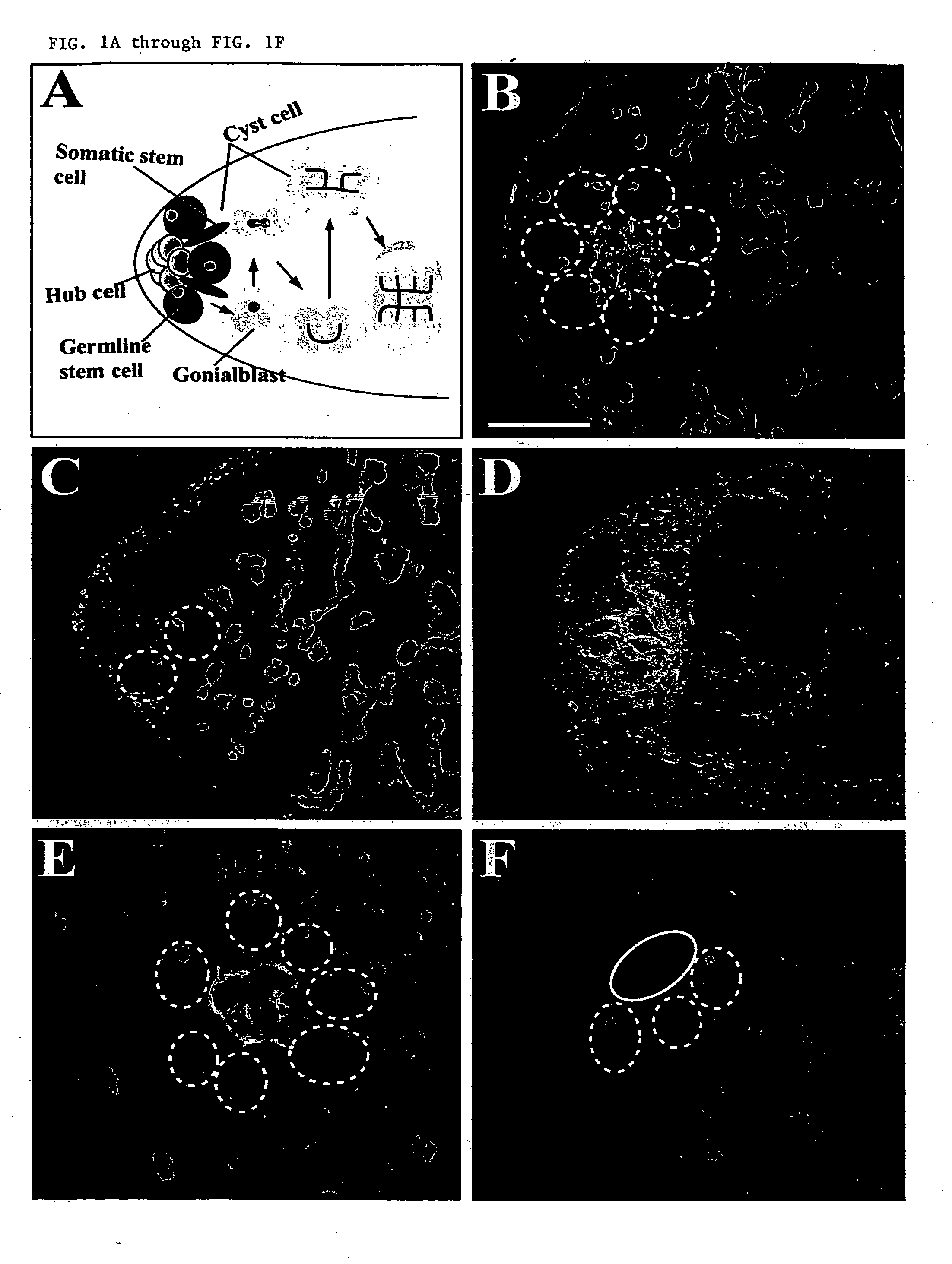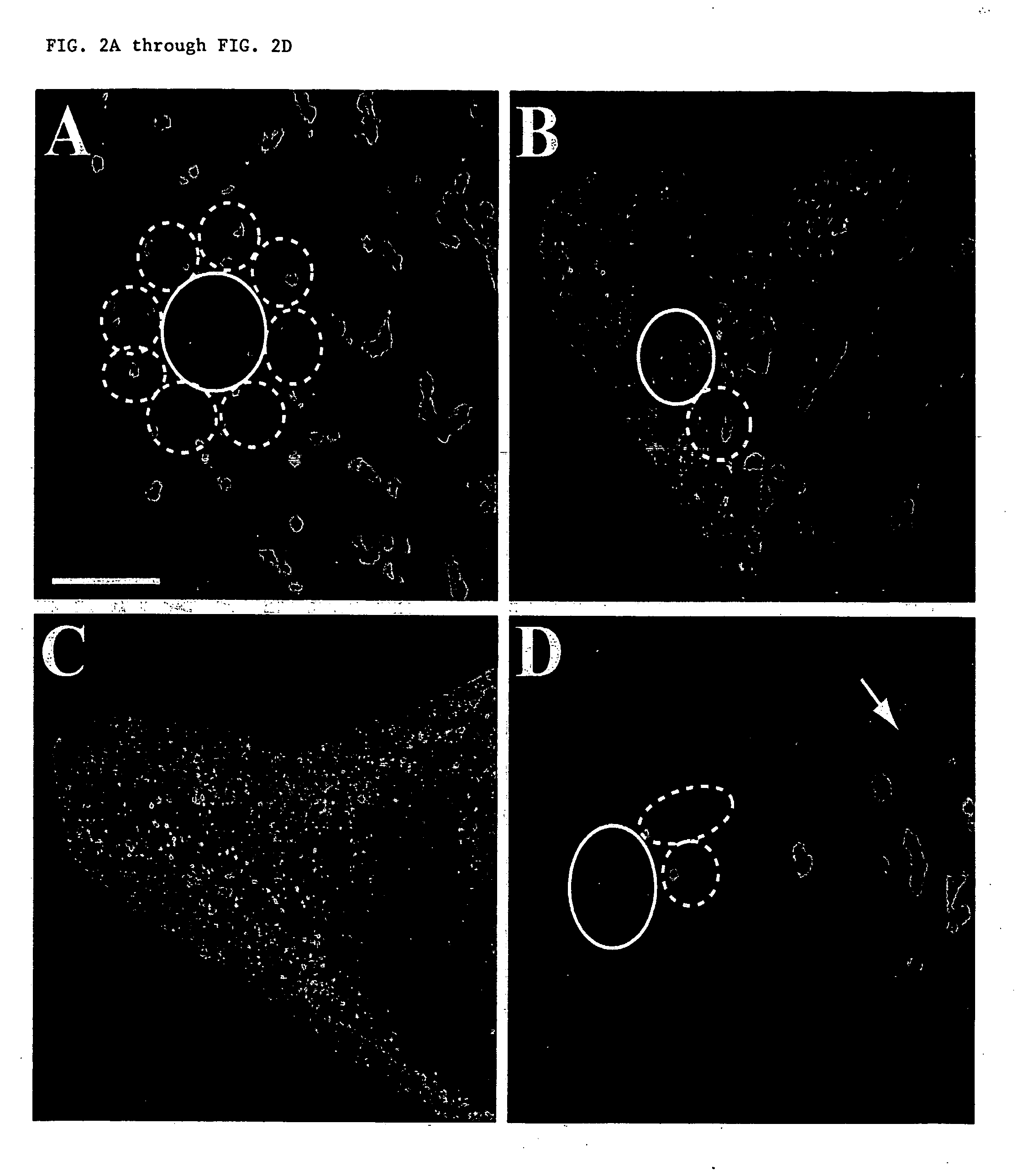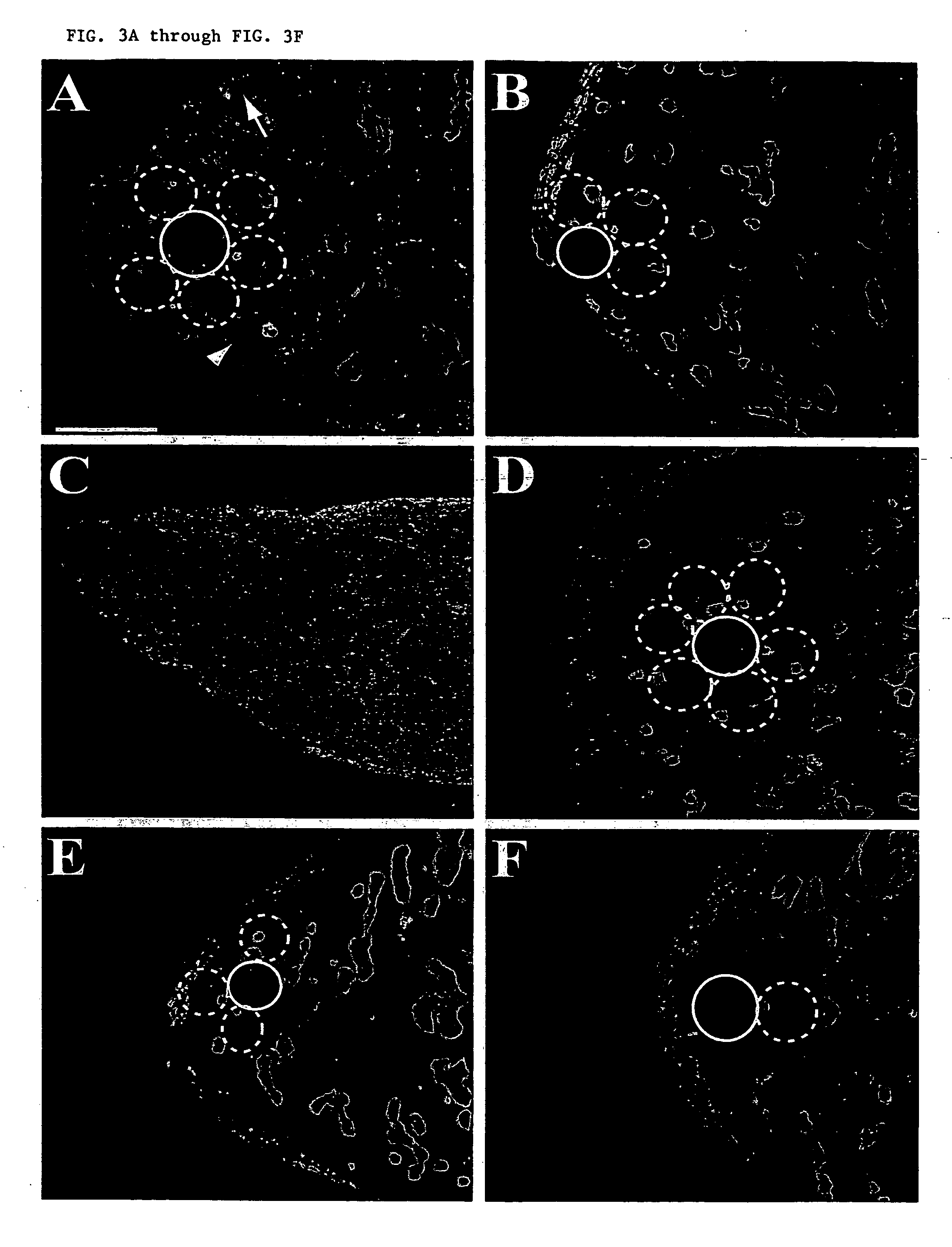Use of BMP (BAM) signaling to control stem cell fate determination
a stem cell fate determination and signaling technology, applied in the direction of artificial cell constructs, cell culture active agents, invertebrate cells, etc., can solve the problems of gsc loss, gsc loss, gsc loss, etc., and remain largely unknown how niche signals control stem cell self-renewal and differentiation,
- Summary
- Abstract
- Description
- Claims
- Application Information
AI Technical Summary
Benefits of technology
Problems solved by technology
Method used
Image
Examples
example 1
[0235] To investigate the possible role of dpp and gbb in maintaining male GSCs, GSCs were examined in the testes of temperature-sensitive dpp and gbb alleles. Two homozygous allelic combinations used in this study, gbb4 / gbbD4 and gbb4 / gbbD20, were allowed to develop to adulthood at 18° C. and, subsequently, shifted to 22° C. or 25° C. for one week. An anti-Hts antibody was used to label spectrosomes and fusomes, while a DNA dye, DAPI, was used to stain nuclei. The hub was identified either by molecular markers, Fasciclin III (FasIII) or DAPI staining (small, DAPI-bright nuclei in the hub cells tightly packed together), while GSCs were identified by the presence of a spectrosome and direct contact with the hub cells. The numbers of GSCs in the testes of different mutants were quantified after the testes were immuno-stained for Hts and FasIII to visualize spectrosomes in GSCs and hub cells, respectively. A wild-type testis carried 9.1 GSCs (n=42, FIG. 1B), and these stem cells were p...
example 2
[0240] The GSC loss caused by defective BMP signaling could be due to direct and / or indirect signaling to GSCs. To investigate whether BMP signals are directly received by GSCs, the BMP signaling activities in GSCs were assessed by examining the expression of Daughters against dpp (Dad). Dad is a dpp responsive gene that negatively regulates dpp signaling (Tsuneizumi et al., 1997). Since dpp and gbb function synergistically in several developmental processes, which may result from sharing common receptors and downstream components (Haerry et al., 1998; Khalsa et al., 1998), Dad expression could potentially reflect the activation of both dpp and gbb signaling pathways. Interestingly, Dad-lacZ, which reflects Dad mRNA expression (Tsuneizumi et al., 1997), was expressed in GSCs and gonialblasts but not in more differentiated spermatogonial cells, as shown in FIG. 3A, indicating that BMP signals function as short-ranged signals, and their activities are restricted to GSCs and gonialblas...
example 3
[0244] To confirm that BMP signals directly act on GSCs and control their maintenance, the FLP-mediated FRT mitotic recombination was used to generate marked GSC clones mutant for BMP downstream components (Xie and Spradling et al., 1998; Kiger et al., 2001; Tulina and Matunis, 2001). The armadillo-lacZ transgenes that are strongly expressed in all the cells in the tip of testis were used to mark mutant GSC clones. The marked GSCs were induced in adult testes by heatshock treatments and identified as lacZ-negative, spectrosome-containing germ cells that directly contact the hub cells. The percentage of testes carrying one or more marked GSCs was determined at different time points after clone induction. The rate of loss of GSCs mutant for different BMP downstream components can be used to determine how each BMP downstream component contributes to the regulation of GSCs.
[0245] Germline stem cell clones mutant for punt tkv, sax, Mad and Med was generated according to the published pr...
PUM
 Login to View More
Login to View More Abstract
Description
Claims
Application Information
 Login to View More
Login to View More - R&D
- Intellectual Property
- Life Sciences
- Materials
- Tech Scout
- Unparalleled Data Quality
- Higher Quality Content
- 60% Fewer Hallucinations
Browse by: Latest US Patents, China's latest patents, Technical Efficacy Thesaurus, Application Domain, Technology Topic, Popular Technical Reports.
© 2025 PatSnap. All rights reserved.Legal|Privacy policy|Modern Slavery Act Transparency Statement|Sitemap|About US| Contact US: help@patsnap.com



